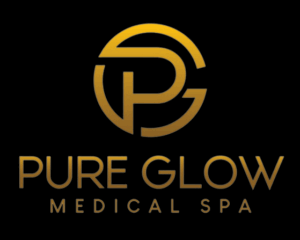In the pursuit of wellness, individuals frequently grapple with the question: Traditional Massage or Modern Techniques – Which Is Better for You? This exploration necessitates an examination of several pivotal factors, including facility strengths, package offerings, operational hours, reservation strategies, location advantages, and the integral aspect of reviews. These elements collectively contribute to the appropriate choice of massage therapy, tailored to meet personal needs.
1. Facility: The Environment that Nurtures
The atmosphere of a massage facility significantly influences the overall experience. Traditional massage centers often exude a serene ambiance, characterized by soft lighting, natural materials, and traditional art that evoke a sense of groundedness. They might feature private rooms that embody tranquility, conducive to practices like Swedish or Thai massage, which emphasize relaxation and rejuvenation. In contrast, modern spas and wellness centers tend to incorporate more contemporary aesthetics, including minimalist designs, high-tech wellness tools, and sometimes even sound and light therapy stations.
It is crucial to assess what environment resonates with your personal preferences. Are you inclined towards a soothing, traditional setting, or do you find modern aesthetics appealing? The facility’s role in creating a specific mood can greatly enhance or detract from the massage experience.
2. Package Offerings: Customization and Variety
The packages available at various facilities distinctly shape the massage experience, presenting a spectrum of options tailored to diverse preferences and needs. Traditional massage establishments may offer packages that focus on specific techniques, such as deep tissue or Shiatsu, often including longer sessions for comprehensive treatment. These packages might also integrate add-ons like herbal compresses or aromatherapy, enriching the overall therapeutic impact.
Conversely, modern facilities frequently present an extensive menu of modalities, often blending various techniques into hybrid approaches. For example, a single package might combine elements of Swedish, deep tissue, and hot stone massage, catering to clients seeking multifaceted relief. It is vital to evaluate the alignment of the offered packages with personal wellness goals; whether seeking relaxation, rehabilitation, or a holistic approach, the right package can significantly enhance the outcome.
3. Operational Hours: Convenience and Accessibility
The operational hours of a massage facility can directly influence its suitability for your schedule. Traditional centers may maintain conventional hours, often closing by early evening, which may not suit those with demanding work schedules or family commitments. However, many modern spas and wellness centers have adapted to contemporary lifestyles, extending their hours to include late evenings and weekends. This flexibility can serve as a significant advantage for busy individuals who desire relief after a long workday or a rejuvenating session on a weekend.
When contemplating a massage, it is prudent to ensure the operational hours align with personal availability. Furthermore, the ease of securing appointments during peak hours or during less convenient times can greatly affect overall satisfaction and accessibility.
4. Reservation and Booking Information: Streamlining the Process
The process of making reservations can vary widely across facilities. Traditional massage centers may rely on more conventional booking methods, such as phone calls or in-person reservations. While this personal touch can enhance the client-provider relationship, it may also lead to time-consuming inquiries, particularly during busy seasons.
In contrast, modern techniques often incorporate streamlined online booking systems that allow clients to schedule appointments at their convenience. Many facilities offer user-friendly mobile applications where clients can view available time slots, choose specific therapists, and even customize their services in real-time. This modern convenience not only enhances user experience but also mitigates the stress associated with last-minute scheduling.
5. Location: Accessibility Meets Comfort
The geographic location of a massage facility plays a vital role in its accessibility. Traditional centers are often found in areas reminiscent of tradition, perhaps nestled in historic districts or quieter neighborhoods, creating a serene oasis away from urban chaos. However, this tranquility might come at the expense of convenience, particularly for those residing or working in bustling areas.
Modern massage establishments typically emerge in high-traffic urban locales, offering easy access for individuals managing hectic lifestyles. Proximity to workplaces or residential areas can influence frequency of visits and overall commitment to wellness practices. The ideal location should ideally balance comfort and accessibility, making it easier to prioritize self-care.
6. Reviews: Insights from the Community
Finally, the perspectives of fellow clients are invaluable when assessing massage facilities. Reviews, whether gathered through online platforms or word of mouth, provide candid insights into the quality of the experience offered. Traditional massage centers often receive accolade for their craftsmanship and authenticity— clients frequently express appreciation for the skilled hands of seasoned practitioners who have honed their techniques over generations.
Conversely, reviews of modern establishments may highlight innovative approaches, friendly staff, and contemporary amenities that enhance the overall experience. It is essential to scrutinize these reviews not only for satisfaction ratings but also for specific mentions regarding the effectiveness of various techniques or therapists.
In conclusion, the choice between traditional massage and modern techniques necessitates a comprehensive examination of various factors. Each aspect, from facility environment to package offerings, operational hours, booking efficiencies, location accessibility, and community reviews, forms a complex web that speaks to individual preferences and wellness objectives. By thoughtfully considering these elements, individuals can make an informed decision that aligns with their unique needs and ultimately fosters a more enriching and beneficial massage experience.





Leave a Comment